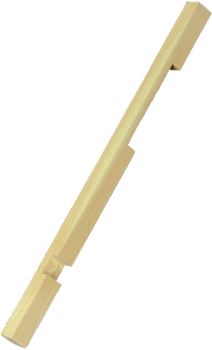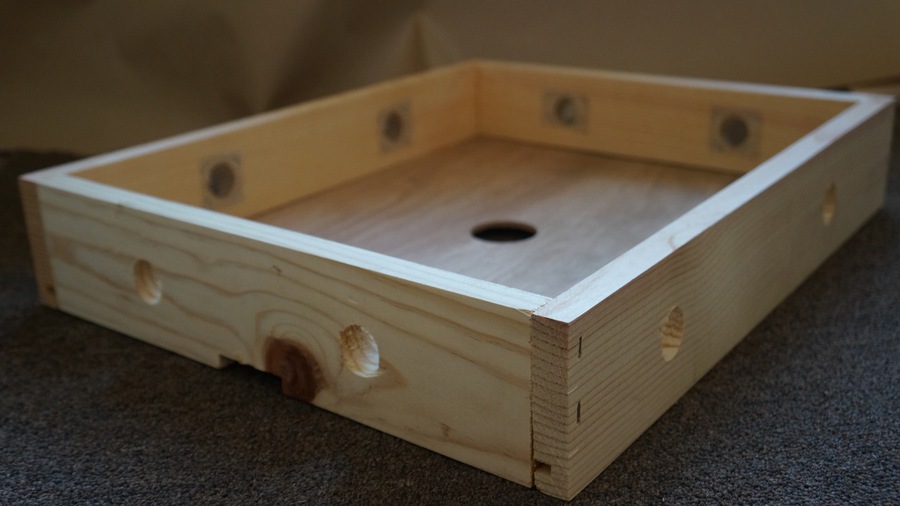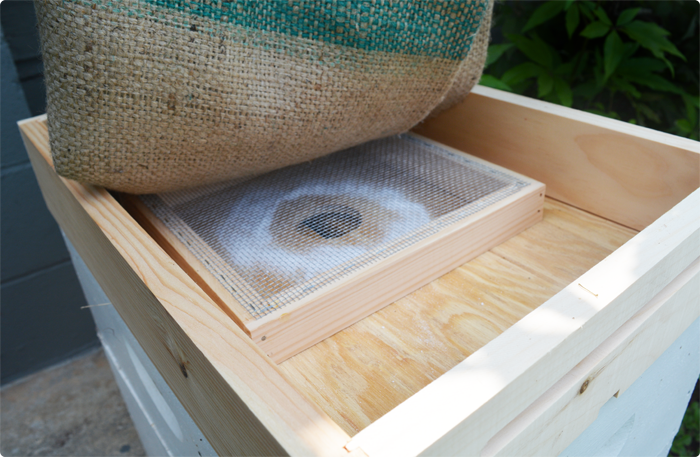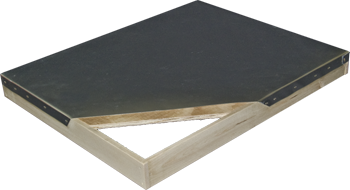What hive components should you have ready for your first bees? Well, as in everything that has to do with keeping bees, there is no ‘right’ answer. All beekeeping is local, and the configuration described here is suited to backyard beekeepers in southern Oregon, where we have hot dry summers and temperate rainy winters (normally).
If you are a backyard beekeeper, and you have decided to use Langstroth equipment, then here is a suggested hive configuration. Before you pick up your bees, you’ll need at a minimum:
- a screened bottom board,
- an entrance reducer,
- one deep hive box with 8 deep frames
- OR 2 medium (Western) boxes with 16 medium frames if you decide to use all medium boxes.
- a Vivaldi top or an inner cover,
- and a telescoping lid or migratory top.
Consider using 8-frame boxes. The 10 frame boxes are extremely heavy when full of honey or bees and brood, and are much harder to manage than 8 frame ones. Eight-frame is not only easier for the beekeeper, many beekeepers think that it works better for the bees. Bees seem to fill out the frames to the edge faster – 10 frame boxes frequently have empty or partially empty frames on the outer edges.
For this discussion, we’ll divide the hive into 4 sections:
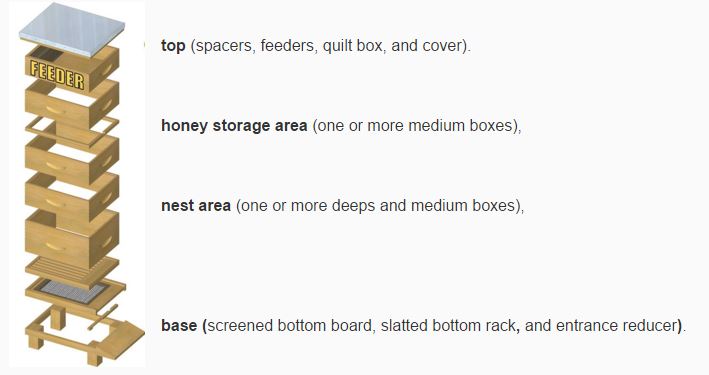
The whole configuration rests on a stand that should raise the hive about 18″ off of the ground.
The base consists of a screened bottom board, (optionally) a slatted bottom board or rack, and an entrance reducer (not shown in the picture below).
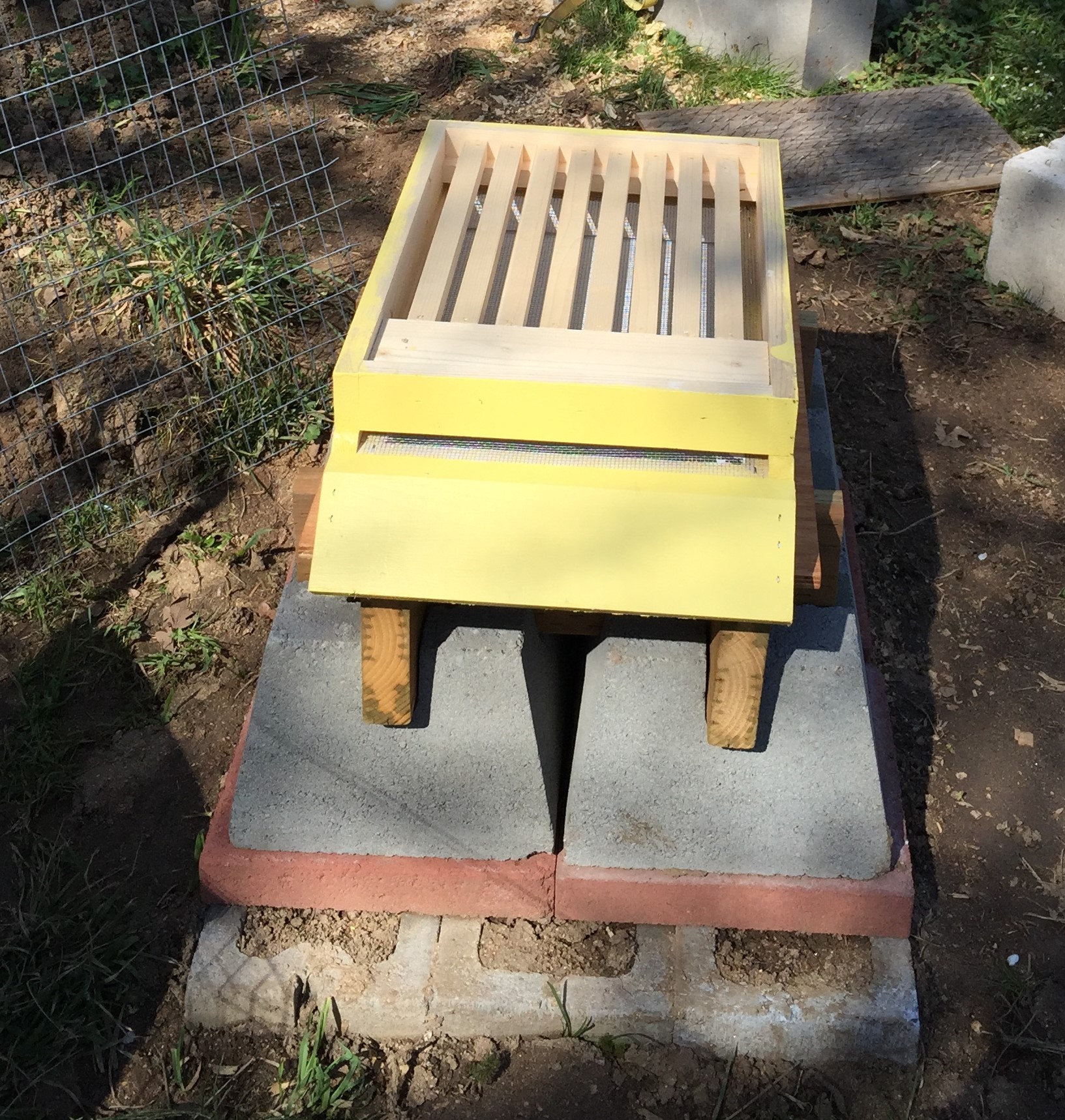
The full hive configuration diagram above shows a screened bottom board in two pieces, but many suppliers make a single unit. The screened bottom board usually comes with a removable sheet of plastic that is used as part of an Integrated Pest Management approach.
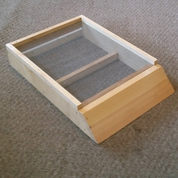
Shastina Millworks screened bottom board
The slatted bottom rack provides insulation, ventilation, protection, swarm prevention, and increased brood area.
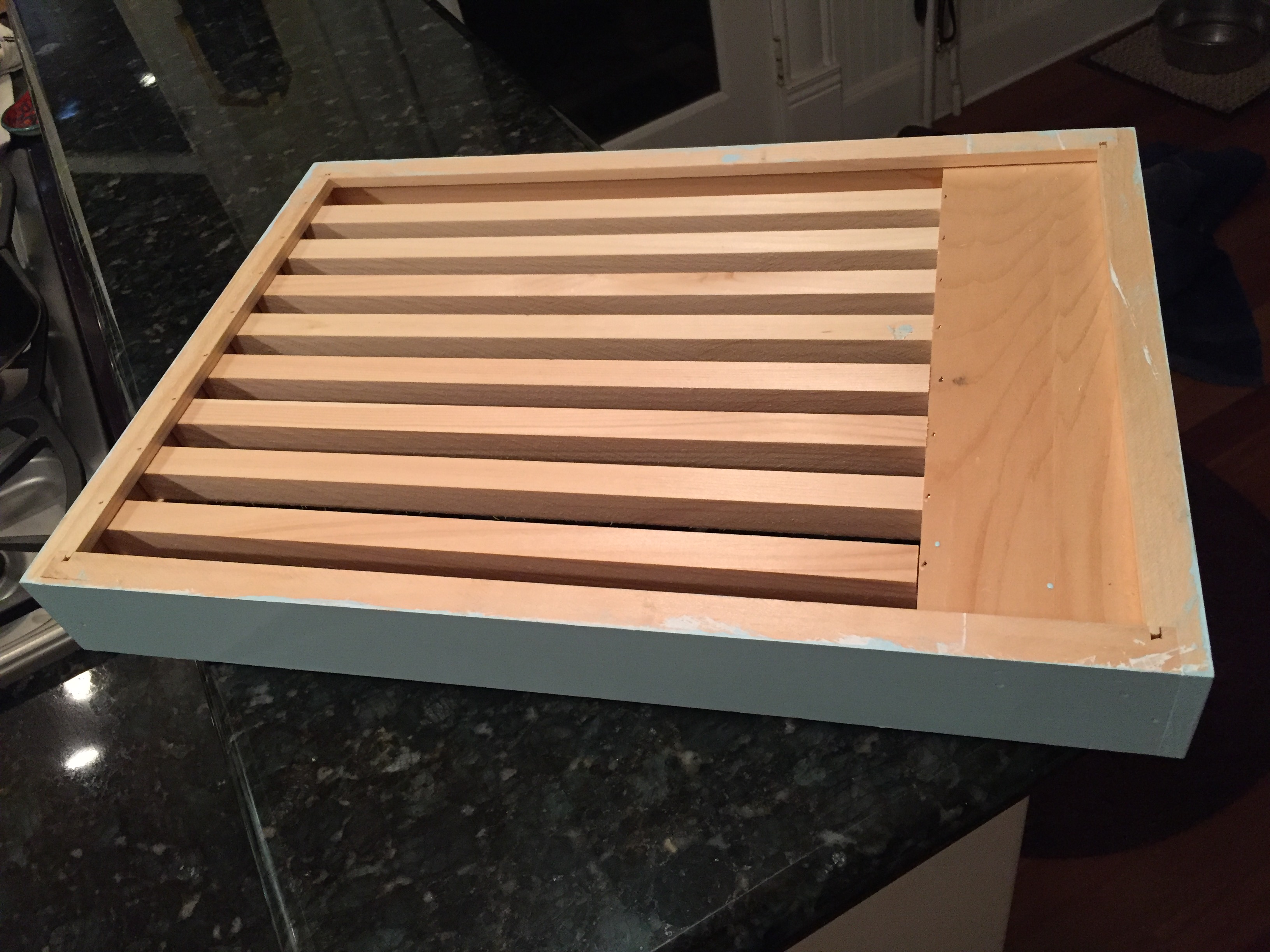
Slatted Bottom Rack
For a well-ventilated hive, such as described here, the entrance can be reduced to 4 or 5 inches all year (12.5 cm). A reduced entrance helps the bees fend off robbing bees and yellow jackets, and reduces drafts.
In winter, the entrance can be further reduced to an inch or less to prevent mice from using the hive as a warm winter location. Another option is to use a reducer with a wire screen big enough for the bees to pass. The reducer should not make it difficult for the bees to remove the debris and dead bees from the hive. There should not be any sort of lip at the bottom that the bees have to lift things over. You can get an entrance reducer with both entrance sizes that is just turned to the smaller entrance as winter approaches.
Bees prefer a nest area with a volume of 45 liters (“Nest site selection by the honey bee,Apis mellifera” by Thomas D. Seeley and Roger A. Morse). A ten frame deep comes close to that volume (42.5 liters), but an 8 frame deep is only 35.5 liters. Some people use two 8 frame deeps for the nest area, but one deep box and one medium are also common as in the diagram.
Above the nest area are one or more supers for honey storage area. Medium boxes are generally used for honey supers, although there are shallow boxes and specialty boxes for cut comb that are available. For the first year beekeeper, 2 medium supers for honey should be sufficient.
The first medium honey super above the nest area is for the bees. Since the honey in this box is not extracted, it can remain on the hive when you feed your bees sugar syrup or drivert. (Never feed your bees while you have honey supers for extraction on the hive. Any honey stored by the bees will be adulterated with the cane sugar and should not be sold.)
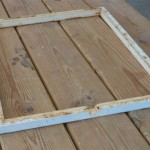
Courtesy Michigan Beekeepers Association
On top of the bees’ honey super is a great place to add an Imirie shim with an upper entrance.This allows the bees to bring nectar into the honey supers more efficiently – they can get right to the frames without hiking up from the bottom entrance. The shim violates bee space, so sometimes the bees will add burr comb in the space created by the shim, but it is easily scraped off. Make your own, or get an inexpensive version from Brushy Mountain.
Ok, so far we have a base, one deep and one medium box (or 2 deeps) as the nest area, one honey super for the bees, and one Imirie shim with an upper entrance marking the top of the bees’ storage area. On top of these components go as many additional medium supers as necessary to store the honey that the bees collect. You can also add more Imirie shims between the supers for ventilation and easy access.
The top area of the hive above the honey supers is where feeding, ventilation and winter insulation components are placed.
A Vivaldi feeder can be used in place of a standard inner cover for increased ventilation. The Vivaldi has 3 inch sides with screened ventilation holes or slots. Some Vivaldi’s are sold with a screened frame that can cover the access hole and simplify feeding drivert or sugar bricks in the winter. They are deep enough to function as a quilt box to hold moisture wicking material in the winter. (See Winter Feeding).
For summer feeding, you can place jars of syrup in the Vivaldi and add an empty super to cover the jars.
To top it off, use a Telescoping Cover. The sides of the cover extend below the top of the hive to prevent water from getting in. The cover is a little larger than the hive boxes allow ventilation through the holes in the Vivaldi cover. A metal covering will help prevent damage to the wood from water pooling on the top after rains.
Some people use only medium boxes (or supers) in their hives.The advantage of this configuration is that you only have to stock one size frame; if you mix deep and medium boxes in a hive, then your frames are not fully interchangeable. Also, medium supers are significantly lighter than the deeps when full.
The bees will split the brood nest over the gaps between the medium boxes used for the nest area, which some list as a disadvantage. Additionlly, NUCs are usually sold with full size frames, so you cannot transfer the frames to medium boxes.
Each medium 8-frame box is about 24 liters, so you would need at least two medium boxes for a starter hive nest area, but 3 is recommended. A recommended overwinter configuration for a hive comprised only of medium boxes would be 3 mediums for the nest area, and a 4th on top full of honey.

